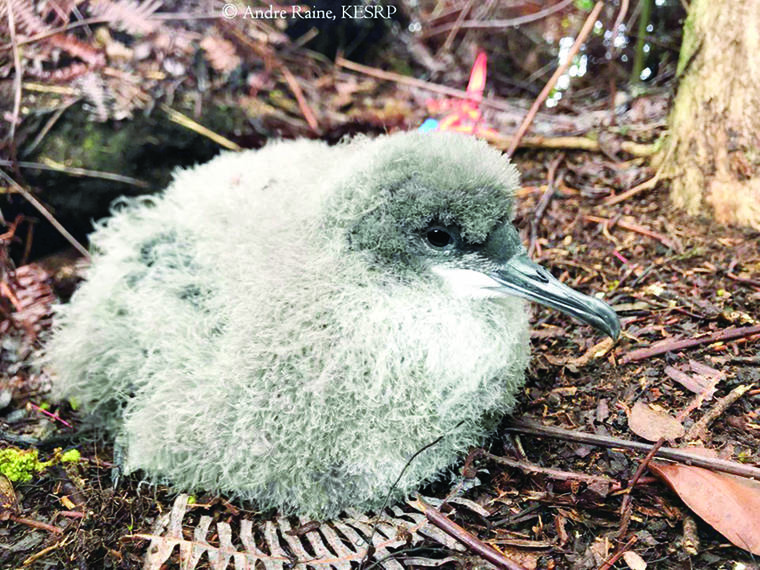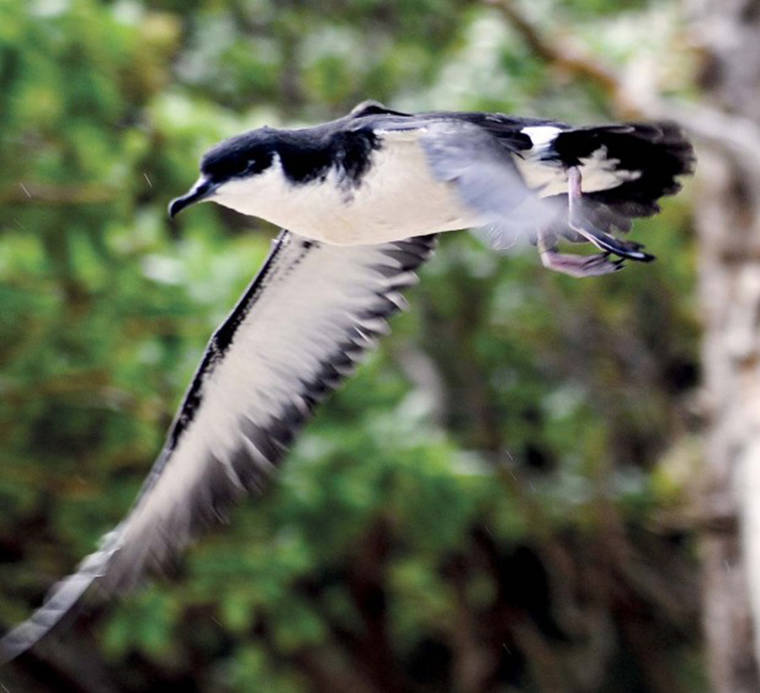LIHU‘E — The U.S. Fish and Wildlife service has finalized the first draft of the Kaua‘i Seabird Habitat Conservation plan, which outlines steps Kaua‘i is taking to minimize light pollution and other dangers to the threatened Newell’s shearwater (Puffinus auricularis newelli, Hawaiian name: ‘a‘o), the endangered Hawaiian petrel (Pterodroma sandwichensis, Hawaiian name: ‘ua‘u), and the endangered Hawai‘i distinct population segment (DPS) of the band-rumped storm-petrel (Oceanodroma castro, Hawaiian name: ‘ake‘ake).
Both the draft environmental assessment and the habitat conservation plan are currently available for public review and comment through April 13.
The permits applications are for a 30-year term.
Kauai is a breeding and nesting habitat for the endangered and threatened seabirds, which fly from burrows — many times in the mountains — out to sea during their first fledging. Light attraction causes these birds to “fallout” or circle the lights and then eventually fall to the ground. Once grounded, many birds are unable to get back in the air and become prey, starve or are hit by vehicles.
These species are part of the unique natural and cultural heritage of Hawai‘i, and the island of Kaua‘i provides important breeding habitat for all three species.
Among the threats known to impact the listed seabird species is attraction to artificial lights, which has been observed and documented on Kaua‘i for decades. The Kaua‘i Seabird Habitat Conservation Plan (KSHCP) has been developed to address light attraction impacts to the listed seabirds on the island of Kaua‘i. The structure of the KSHCP enables multiple individual entities on Kaua‘i to each apply for take authorization for light attraction impacts to the listed seabird species under one coordinated framework. This framework takes advantage of economies of scale and enables a pooling of resources to collectively achieve conservation goals.
As outlined in Section 10 of the Endangered Species Act, habitat conservation plans are voluntary agreements between the Service and a landowner, private company or non-federal agency that ensure harmful effects to threatened and endangered species are minimized or offset. The KSHCP associated with the permits relies on a unique structure to best meet the need for an effective and efficient response to the widespread nature of light attraction impacts on Kaua‘i.
Several organizations or entities are involved in forming the Kaua‘i Seabird Conservation plan, published under the USFWS agency including Norwegian Cruise Line, Princeville Resort Kaua‘i, Kaua‘i Marriott Resort, Alexander &Baldwin, Kaua‘i Blue doing business as Sheraton Kaua‘i, Kaua‘i Coffee Company and Kaua‘i County.
Because of the seabird fallout, Friday night football was not allowed from 2010 to 2018, until shielded lights were installed at Vidinha Stadium and in the parking lot. Now, evening games are allowed during specific times in the season, with breaks during the height of the fledging season.
That’s just one of the mitigations included in the Kaua‘i Seabird Habitat Conservation plan, which also outlines the use of motion sensors, lowering intensity or light output, angling lights downward and deceasing visibility of interior lights.
More info: www.fws.gov/pacificislands
Email: KauaiSeabirdhcp@fws.gov. Include “Kaua‘i Seabird HCP/EA” in the subject line of the message.
U.S. Mail: Obtain a compact disk with electronic copies of these documents by writing to Ms. Katherine Mullett, Acting Field Supervisor; U.S. Fish and Wildlife Service; Pacific Islands Fish and Wildlife Office; 300 Ala Moana Boulevard, Room 3-122; Honolulu, HI 96850.
Telephone: 808–792–9400




I miss the dark starry nights of my youth, the lock down silence in Seattle is very soothing.
Thought you would like to know.